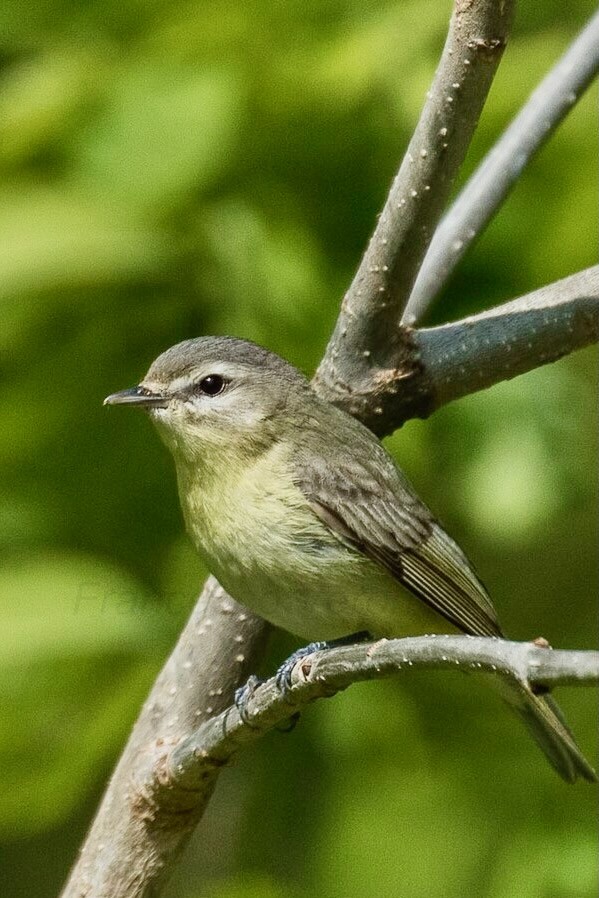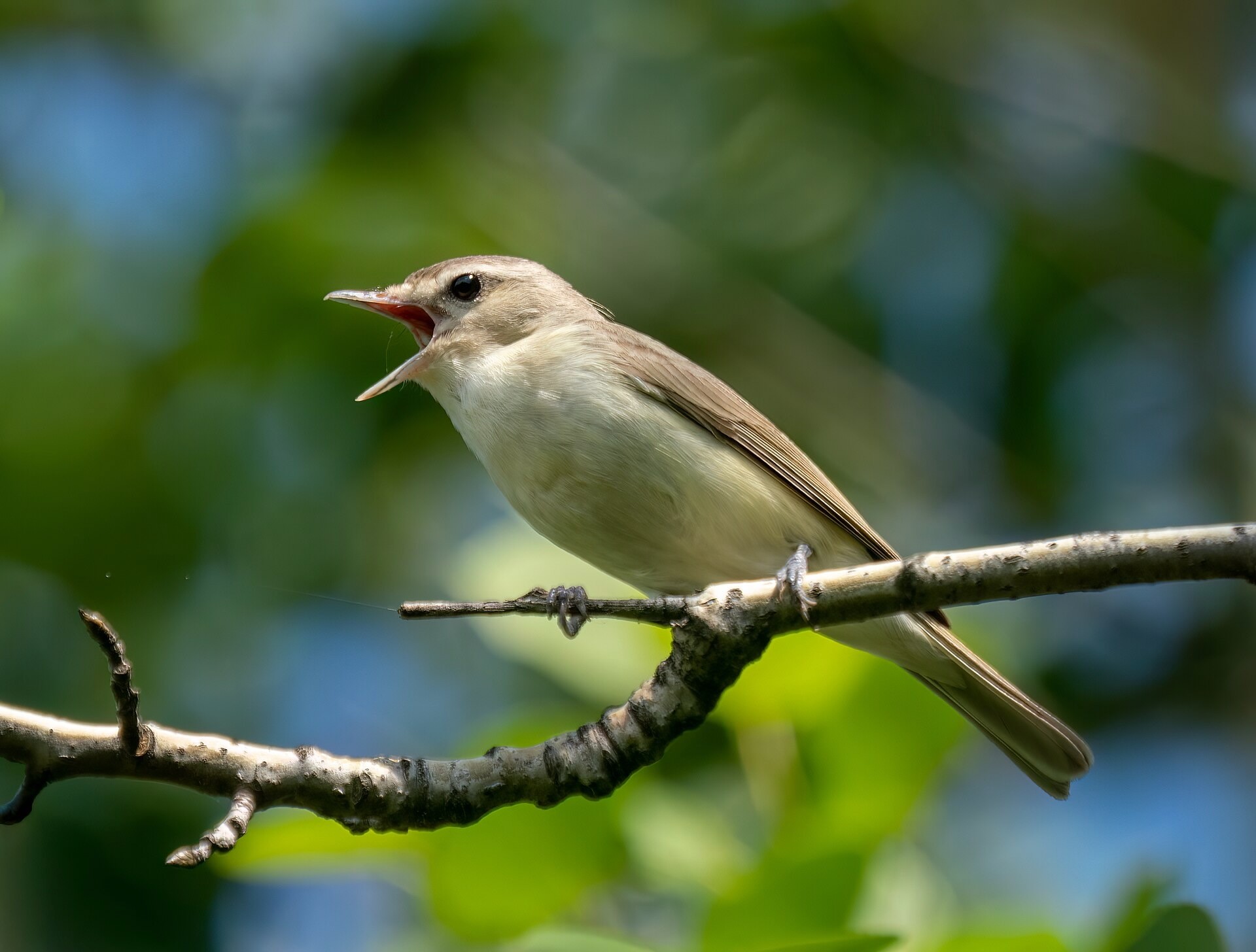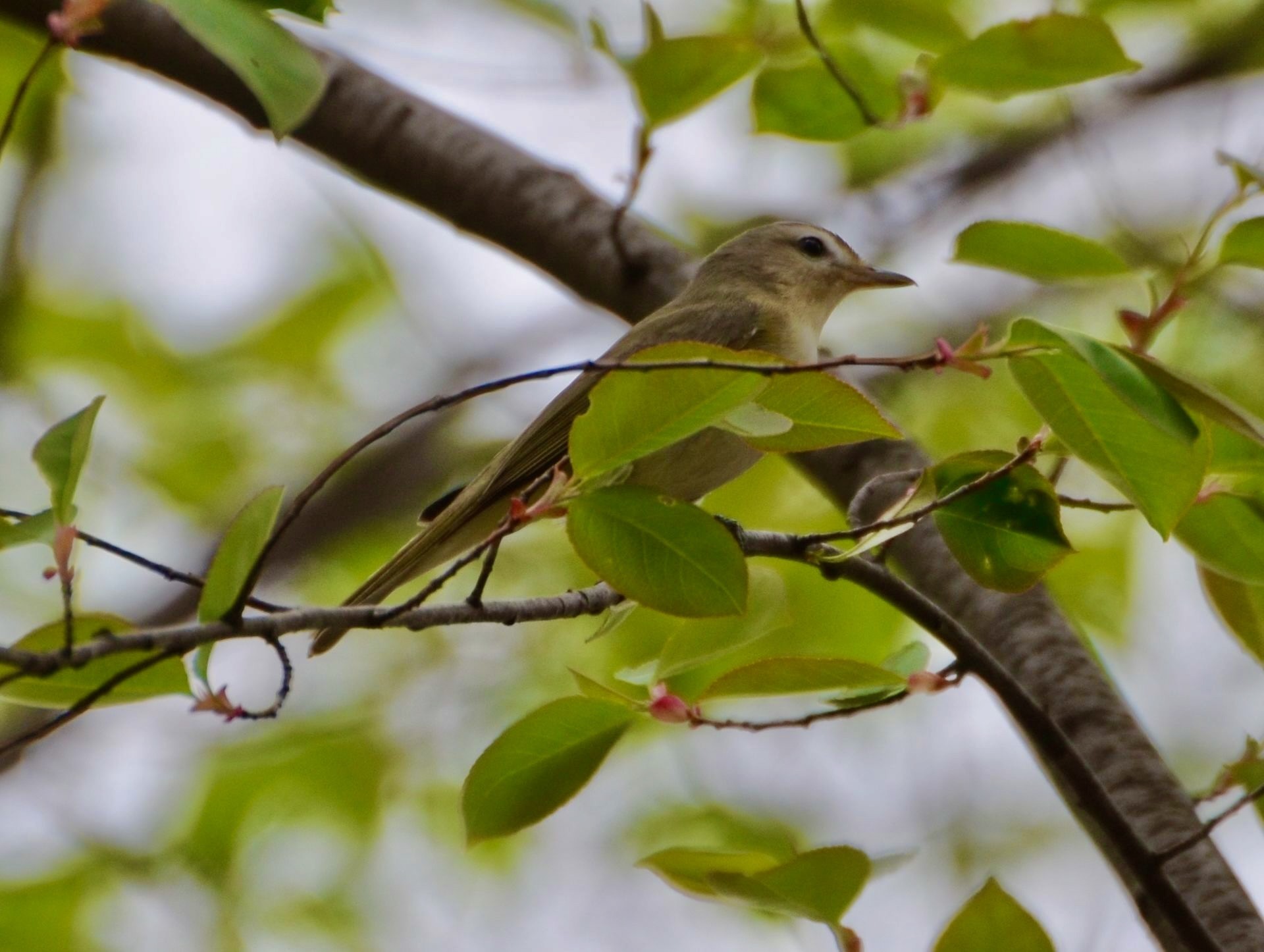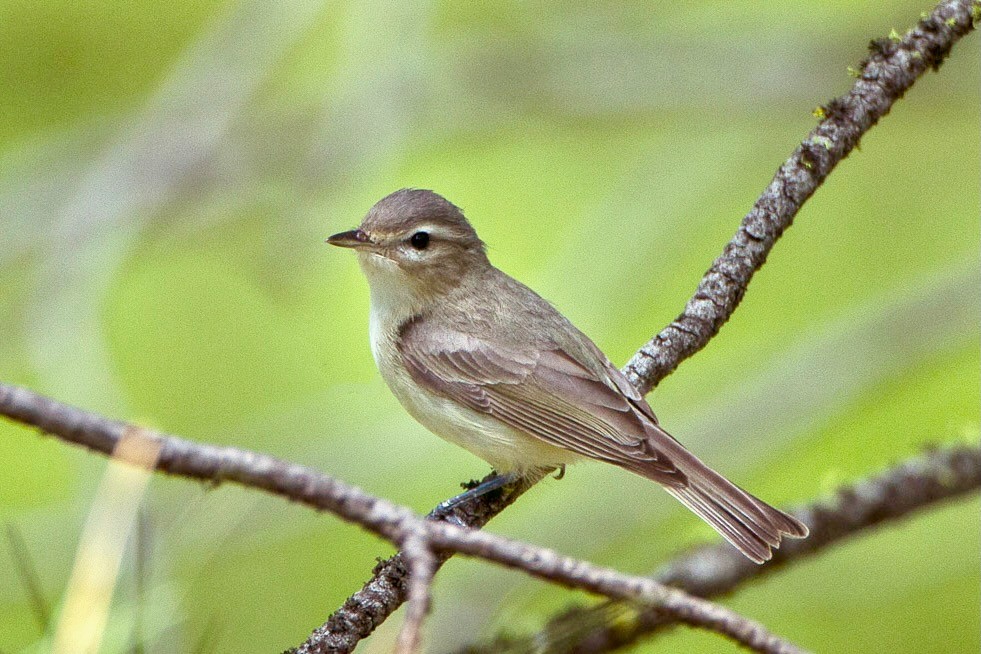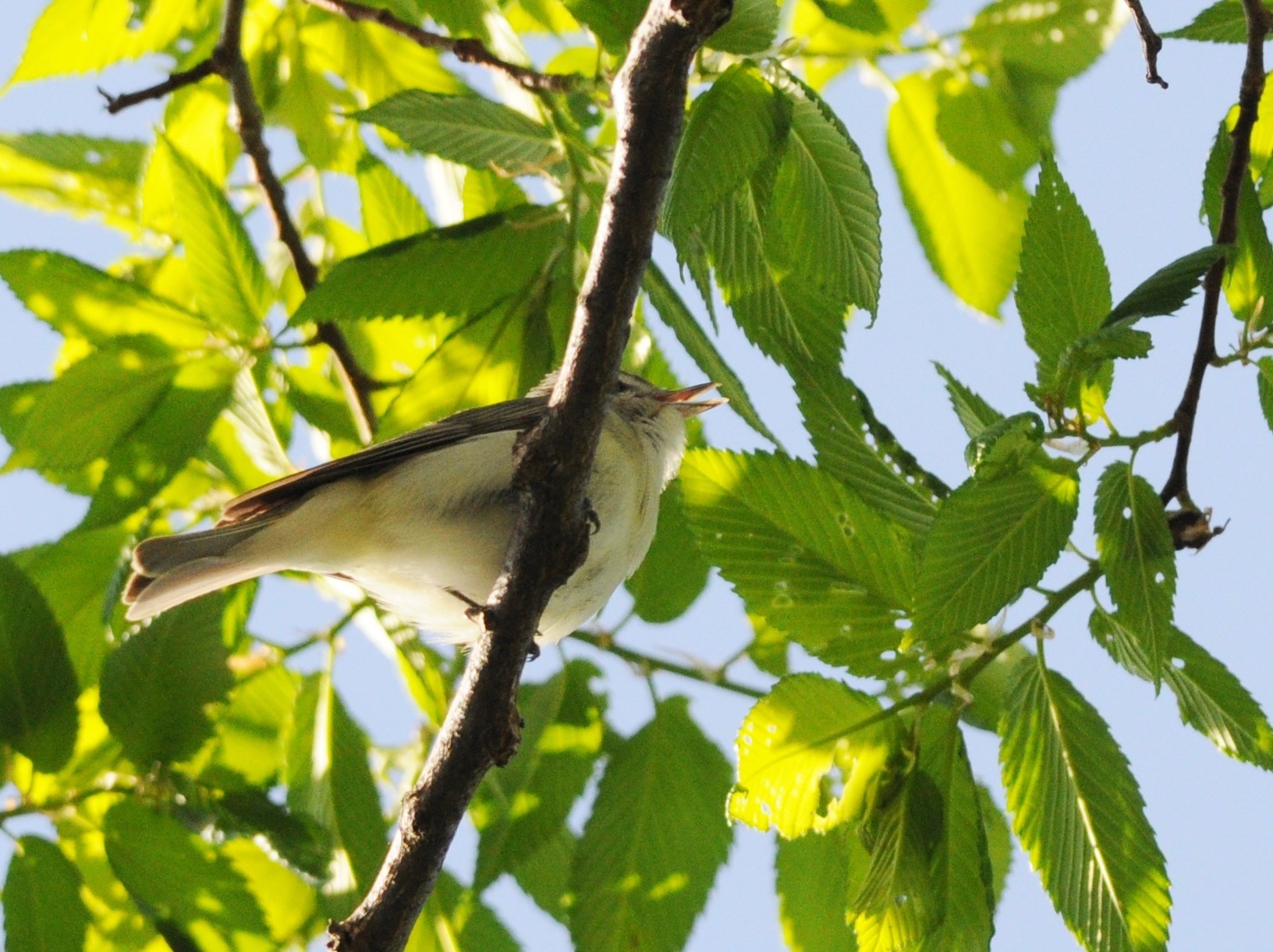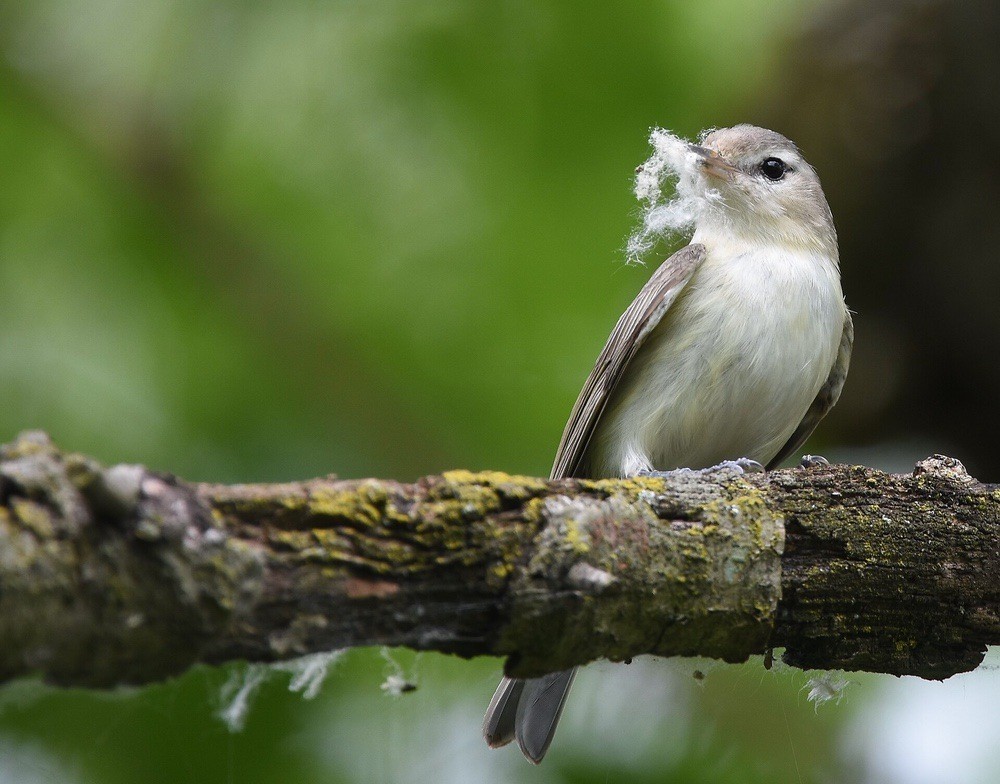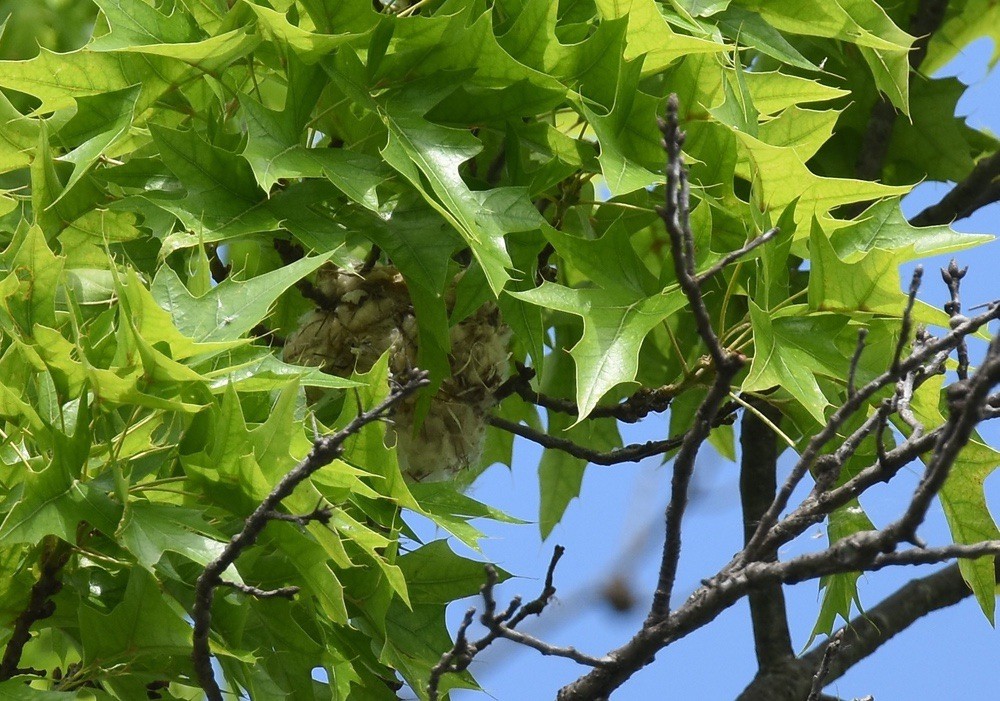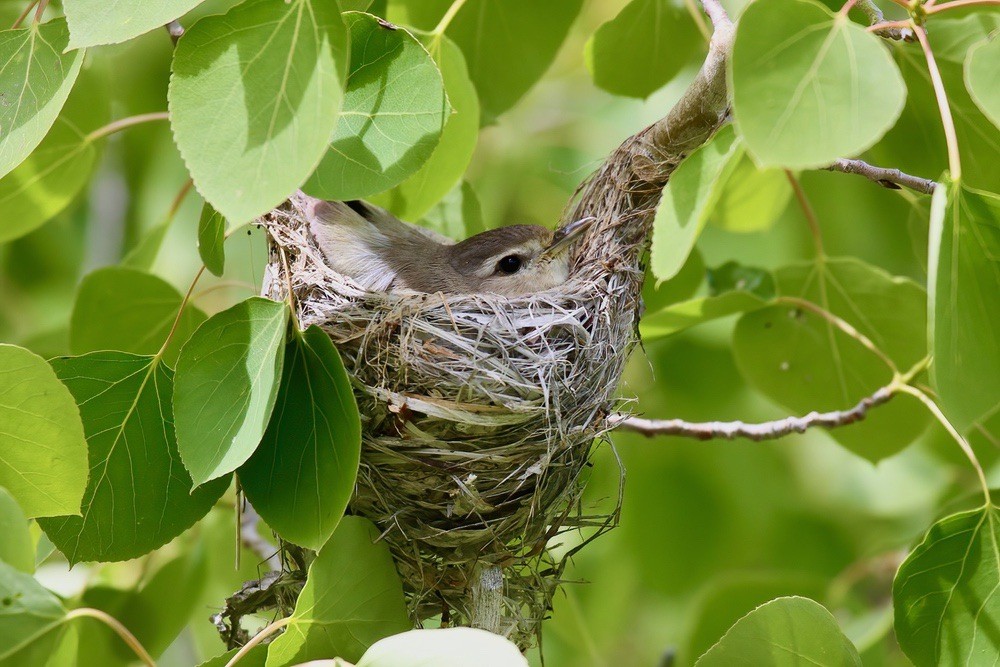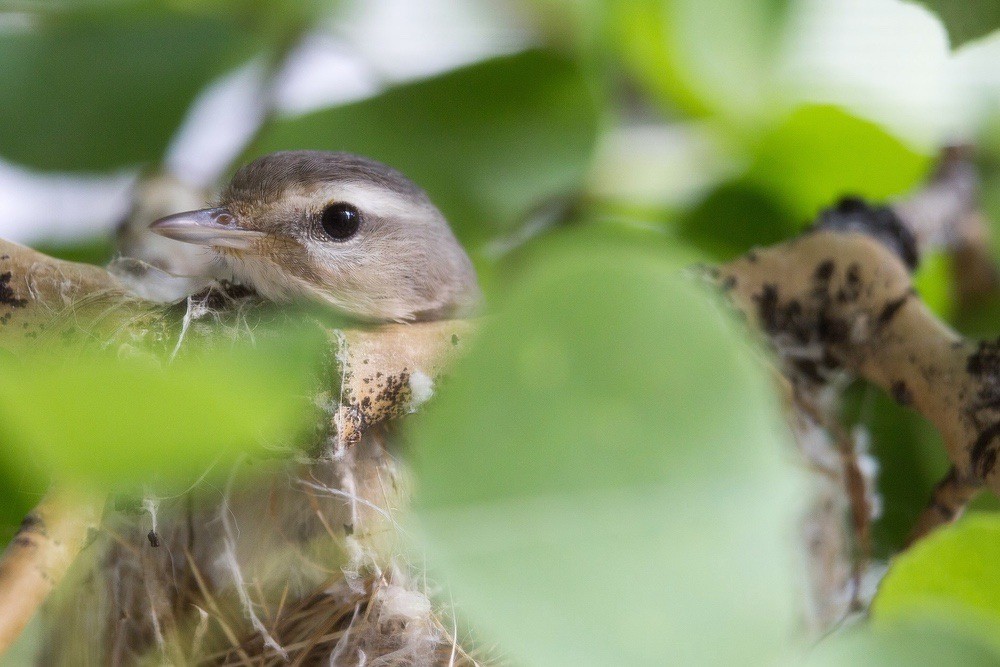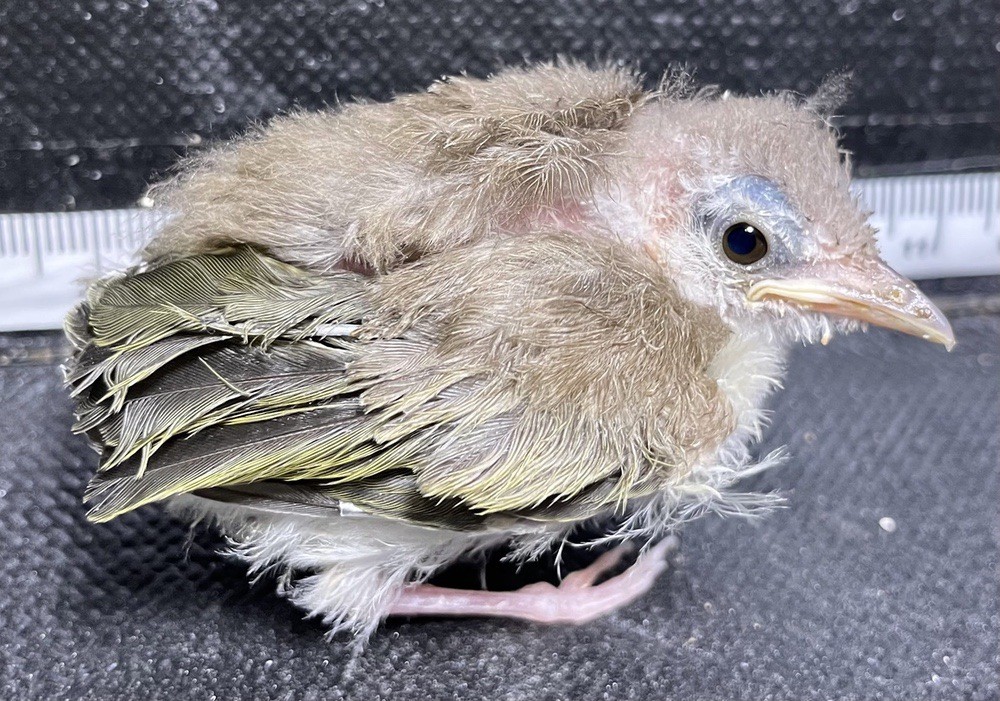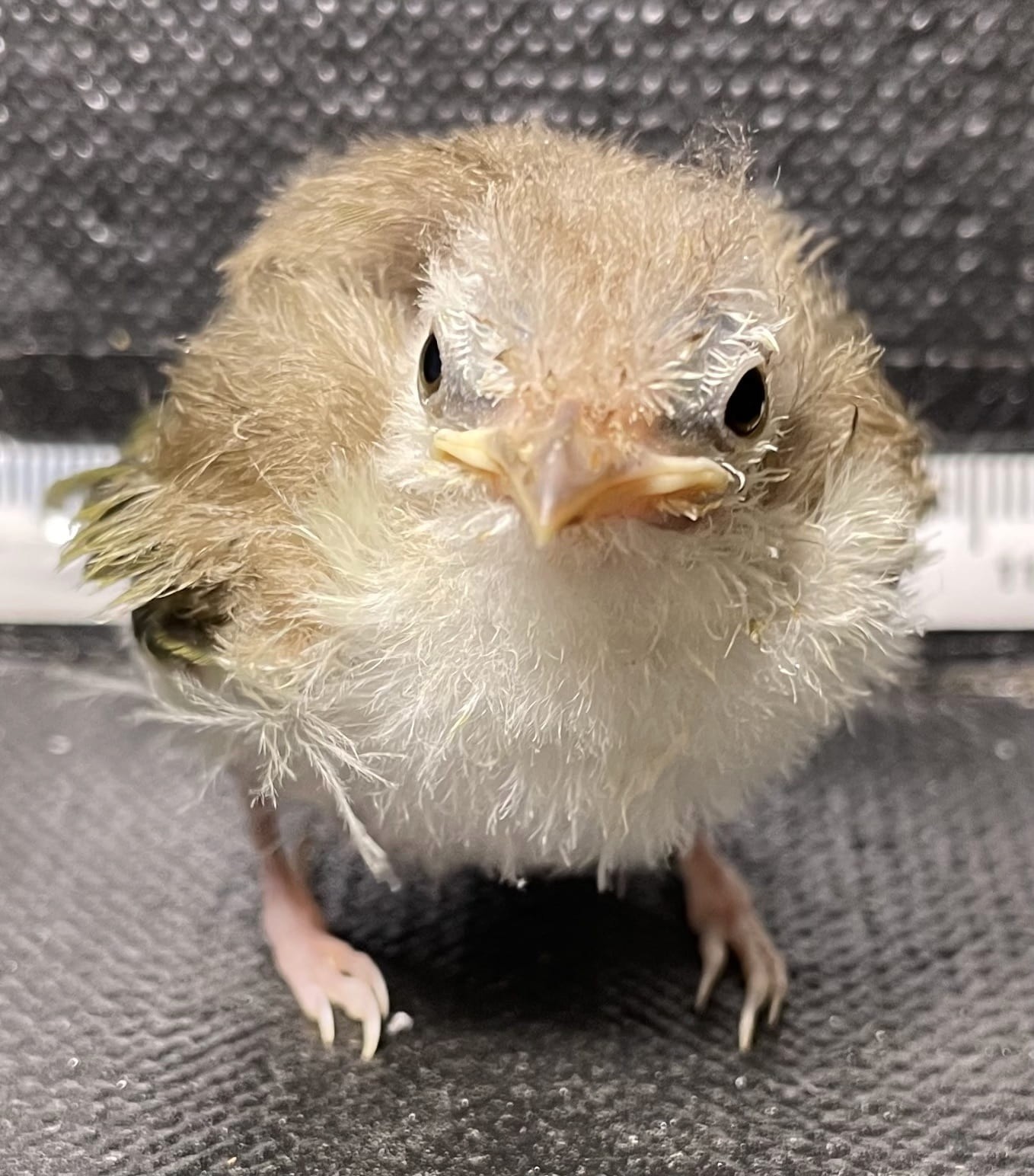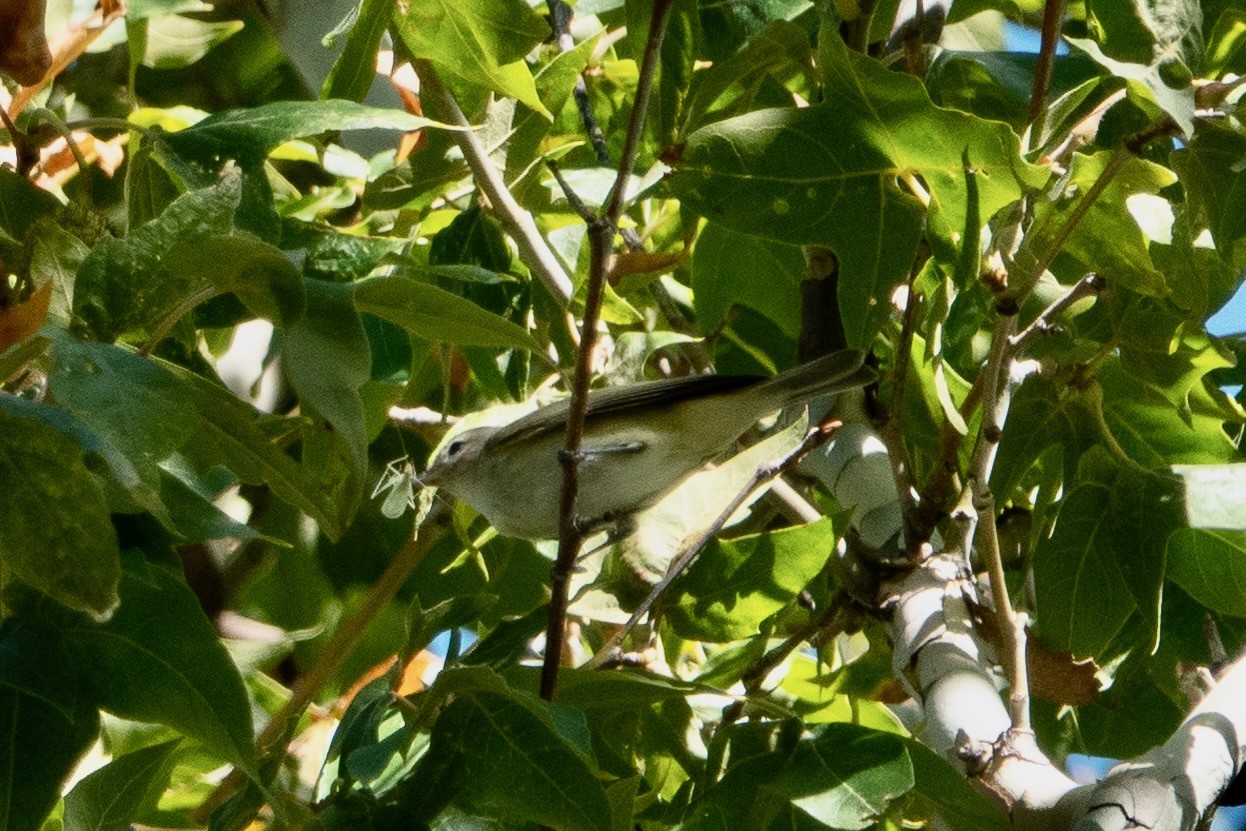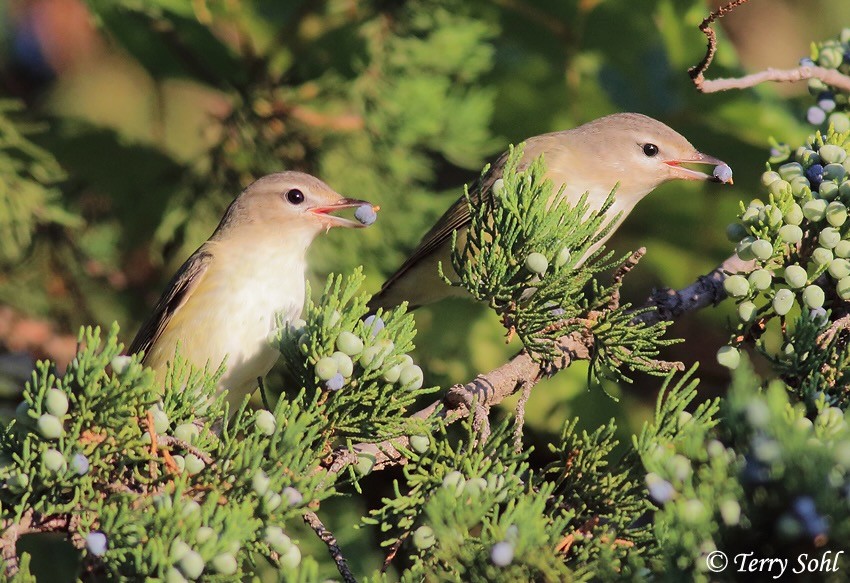Warbling Vireo
The Warbling Vireo has only been observed a handful of times since records began for Salter Grove in 2002. Most recently, the rapidly undulating song of a migrant was heard in mid-May 2025 near the playground.
It has a nondescript olive-gray plumage that disappears into tree foliage so it is rarely seen as it forages for insects and spiders high up in the canopy. It is more often heard than seen as it sings incessantly during the breeding season, even while incubating eggs.
It occurs across southern Canada and much of the United States in deciduous forests and woodland, especially along riverine habitats. It is known to nest in parks and suburban areas with large trees where its nest may be secured to twigs up to a height of 50 feet.
The Warbling Vireo was considered a common summer resident in the late 1800's in Rhode Island, particularly in cities and villages. it continues to be widespread and data collected for the first (1982-1987) and second (2015-2019) Rhode Island breeding bird atlases indicate that it is increasing in number across the state as well. However, the warming climate is likely to shift its range northward and populations may disappear over time.
For more information:
https://www.allaboutbirds.org/guide/WarblInsg_Vireo
https://www.audubon.org/field-guide/bird/warbling-vireo
https://en.wikipedia.org/wiki/Warbling_vireo
https://www.birdsbybent.com/////////ch81-90/warvireo.html
https://animaldiversity.org/accounts/Vireo_gilvus/
Clarkson, C. E., Osenkowski, J. E., Steen, V. A., Duhaime, R. J., and Paton, W.C. (2023) The Second Atlas of Breeding Birds in Rhode Island. Rhode Island Department of Environmental Management Division of Fish and Wildlife. pp. 246-247.
Howe, Jr., R.H. and Sturtevant, E. (1899) The Birds of Rhode Island. p. 15, 77.

